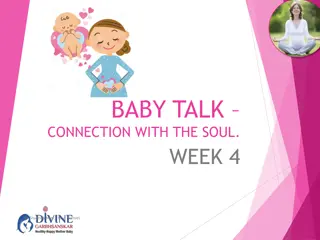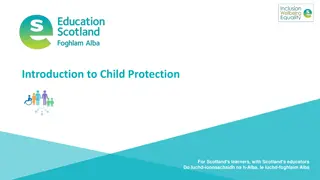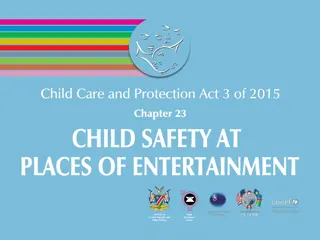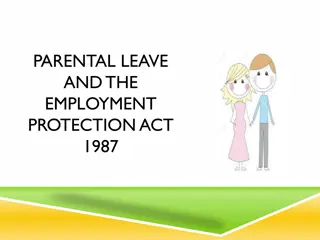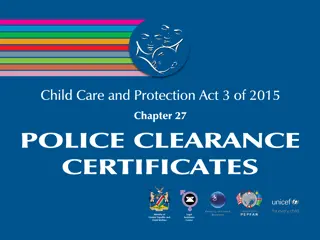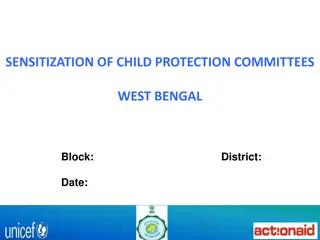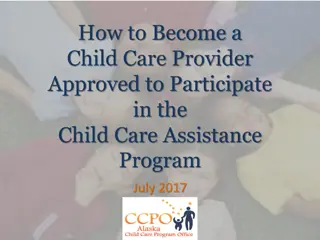Understanding Baby Dumping and the Child Care and Protection Act of 2015
Baby dumping, the act of abandoning infants, is a serious issue addressed by the Child Care and Protection Act of 2015 in Namibia. This Act provides safe options for anonymously leaving children to prevent harm or death. Abandoned children are placed in temporary care until claimed or available for adoption. Criminal charges may apply, and causes such as parenthood overwhelm, poverty, and lack of support contribute to this problem.
Download Presentation

Please find below an Image/Link to download the presentation.
The content on the website is provided AS IS for your information and personal use only. It may not be sold, licensed, or shared on other websites without obtaining consent from the author. Download presentation by click this link. If you encounter any issues during the download, it is possible that the publisher has removed the file from their server.
E N D
Presentation Transcript
Child Care and Protection Act 3 of 2015 Chapter 21 BABY DUMPING Ministry of Gender Equality and Child Welfare Legal Assistance Centre
Overview To discourage baby-dumping, the Child Care and Protection Act makes provision for safe places to leave children anonymously, without any criminal penalty. Any abandoned child must immediately be reported to the police and handed over to a social worker. The social worker will put the child in a place of safety for temporary care. A child who has not been claimed after 60 days may be made available for adoption. If the child is claimed by family members or by a parent, the social worker will continue to monitor the situation. A child will be returned to the person who abandoned the child only if the social worker is sure that the child will be safe.
1. What is baby-dumping? Baby-dumping is the informal term used in Namibia for abandoning an infant and thereby exposing it to danger and possible death. This term is not used in the Child Care and Protection Act, but it is well-known to the public. The Act refers to abandoned children .
Criminal charges Baby-dumping can give rise to criminal charges: murder (intentionally causing the death of another person may be referred to as infanticide when an infant is involved) culpable homicide (negligently causing the death of another person) exposing an infant (intentionally exposing and abandoning an infant in circumstances which make it likely that death from exposure will result) concealment of birth (General Law Amendment Ordinance 13 of 1962, s.7) child abandonment (Child Care and Protection Act, s.254).
The problem of baby-dumping Offences in the Act are gender-neutral, even though only mothers are usually punished for baby-dumping. The law provides for punishment for both parents if they have failed in their duties to care for and provide for a child. Police statistics indicated that 20 infants were dumped by their mothers between January and June 2019. Police statistics may underestimate the true extent of the problem since it is likely that some cases go unreported.
Causes of baby-dumping Overwhelmed by parenthood Post-partem depression Poverty & shame Lack of access to contraceptives Lack of knowledge about family planning Unwanted sex / GBV Men refusing to share responsibility for contraception Fathers who fail to provide emotional / financial support Strict laws on abortion
2. Leaving an unwanted child at a safe place A person will NOT be prosecuted for abandonment if a child is left in the control of a person at an approved authority AND shows no signs of abuse, neglect or malnutrition.
What is an approved authority? hospital children s home school fire station police station any other place identified in regulations place of safety BabySaver box at Ruach Elohim Foundation in Swakopmund. The box has a sensor that alerts eight people when a baby is placed inside, to ensure a prompt response.
3. Dealing with an abandoned child Any person who finds an abandoned child must report it to police or a social worker. Designated social worker must: open a file and record place, date & identifying characteristics put wrist or ankle tag on the child put child in place of safety for temporary care initiate investigation place advertisements and see if anyone claims child
Steps by social worker Advertisements in at least two newspapers PLUS radio announcement. The person who left the child or a family member may seek to reclaim the child within 60 days. If the person who abandoned the child seeks to reclaim the child, there must be a social worker investigation and a child protection hearing to decide on the way forward such as return under social worker supervision, or court-ordered kinship care, foster care or other alternative care with the ultimate aim of family reunification. A person claiming to be related to a child must provide some verifying information. DNA testing can be used if there is doubt.
Adoption of abandoned child An abandoned child becomes eligible for adoption 60 days after the publication date of the last advertisement if no family member comes forward. The child can then be listed in the Register of Adoptable Children and Prospective Adoptive Parents (RACAP), as explained in Chapter 17 of the Guide on adoption.
Birth certificates for abandoned children An abandoned child can be issued with a birth certificate using a name chosen by the social worker and an approximate date of birth. If the age of the child is uncertain, there is a procedure in the Child Care and Protection Act for estimating age. If there is no information about either of the child s parents, this part of the birth certificate can be left blank. No child can be adopted without first having a birth certificate. Abandoned children with unknown parents found in Namibia are normally assumed to be Namibian citizens, as they would otherwise be stateless.
Recommendations from Parliament on preventing baby-dumping (2010) Empowerment to control fertility & prevent unwanted pregnancies Encourage boys & men to take more responsibility Counselling and support for expecting parents More More Strengthen alternative care systems & public information on options information on legal abortions & revision of abortion law research on the problem of baby- dumping ***




